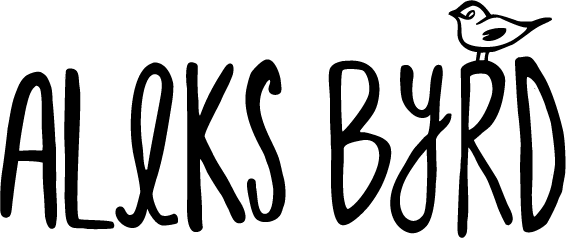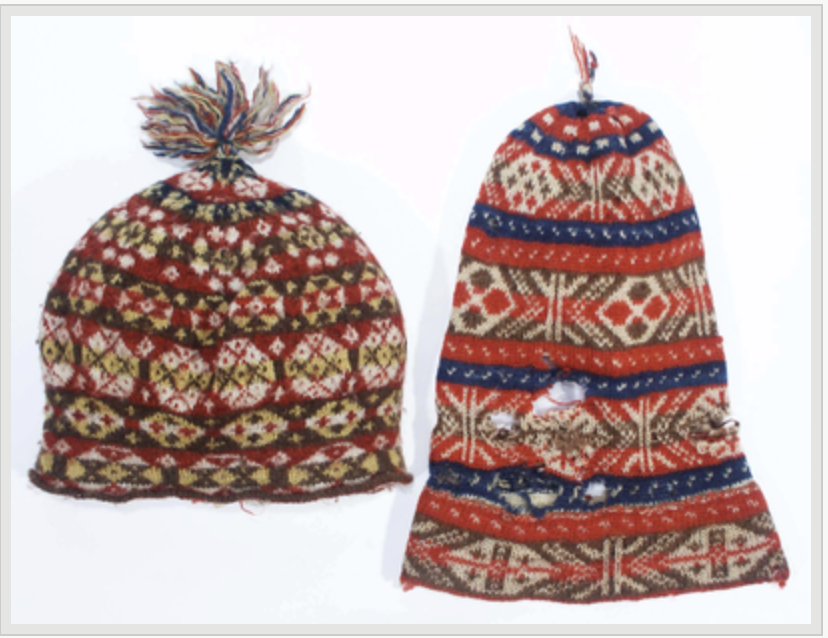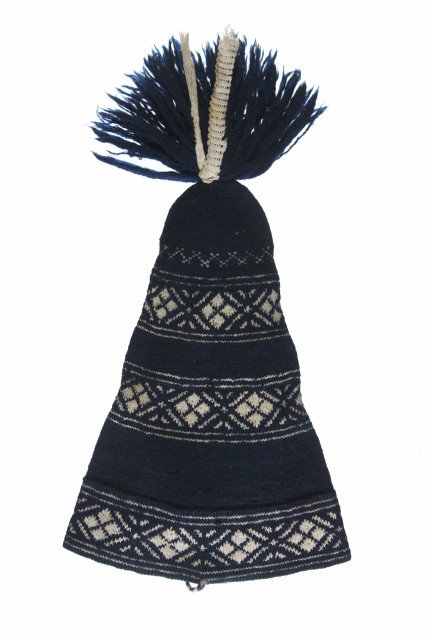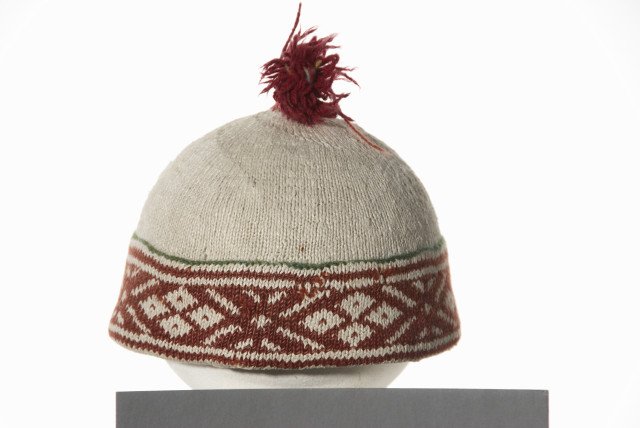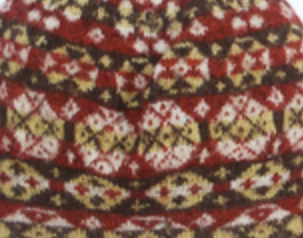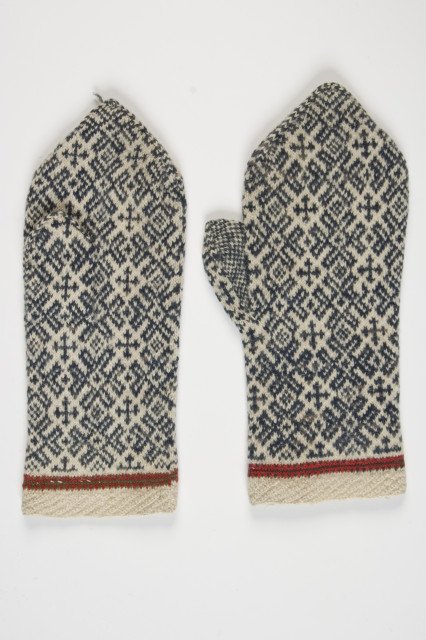Moving Beyond the Eight Point Star
The eight point star is the most omnipresent and obvious motif in the region. It has been a great case study to begin my research with since there is so many variations and styles out there! Don't worry, I'm not turning my back on the eight point star completely, however I think it time to explore some of the other motifs out there. The process of looking at all the beautiful motifs and reading about uniques aspects to different knitting traditions, I've stumbled upon other interesting motifs to highlight and explore. Remembering Shelia McGregor in Traditional Fair Isle Knitting highlighting the concept that not only did motif patterns flow into Shetland from the Baltics but that Shetland inspired and sent their own motifs out to Scandinavia and the Baltics (pp. 22) ....this came to mind:
From the left: two traditional Fair Isle knit caps from 1910 part of the Shetland Museum collection (photo number 01382), knit stocking hat from Mustjala parish in Saarema, Estonia part of the Eesti Rahva Muuseum (Estonian National Museum ERM A 290:263), knit hat also from Mustjala parish in Saarema, Estonia part of the Eesti Rahva Muuseum (Estonian National Museum ERM A 290: 267). Both Estonian hats seen in "Estonian Knitting 1 : Traditions and Techniques" by Pink, Reimann, and Jõeste (pp.60 & 170).
The hats all share a decidedly similar resemblance with similar motif bands. This might be supporting evidence of McGregor's thought of motifs spreading from Shetland back eastward. This might be another interesting motif to explore creating a similar motif map and grid taxonomy.
Looking closely at the Fair Isle hat alongside a pattern from a mitten from Halliste parish, Pärnumaa, Estonia (Estonian National Museum ERM A 509:2783, I saw this mitten pattern originally in Aino Praakli's book "Eesti Mustrid Ilma Laande Laiali" pp. 98) you can see a similar geometric shape/motif.
Reference:
McGregor, S. (2003). Traditional Fair Isle knitting. Mineola, N.Y.: Dover.
Shetland Museum (2002) Fair Isle caps photo number 01382. Available at: http://photos.shetland-museum.org.uk/index.php?a=ViewItem&key=SXsiTiI6Mjg5LCJQIjp7InZhbHVlIjoiQ0FQUyIsIm9wZXJhdG9yIjoiMSIsImZ1enp5UHJlZml4TGVuZ3RoIjoiMyIsImZ1enp5TWluU2ltaWxhcml0eSI6MC42NSwibWF4U3VnZ2VzdGlvbnMiOiI1IiwiYWx3YXlzU3VnZ2VzdCI6bnVsbH19&pg=4&WINID=1512922068837#cJfn2VGxnToAAAFgQS602w/124491 (Accessed: 10 December 2017).
Pink, A. and Reimann, S. and Jõeste, K. (2016) Estonian Knitting 1; Traditions and Techniques. Türi, Estonia: Saara Kirjastus. 1.
Eesti Rahva Muuseum ERM A 290: 263. Available at: https://www.muis.ee/museaalview/578740 (Accessed 10 December 2017).
Eesti Rahva Muuseum ERM A 290:267. Available at: https://www.muis.ee/museaalview/502511 (Accessed 10 December 2017).
Praakli, A. Eesti mustrid ilma laande laiali. Tallinn, Estonia: Tänapäev.
Eesti Rahva Muuseum ERM A 509: 2783. Available at:https://www.muis.ee/museaalview/502120 (Accessed 10 December 2017).
